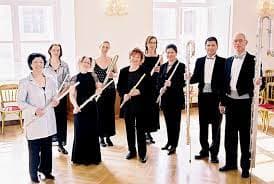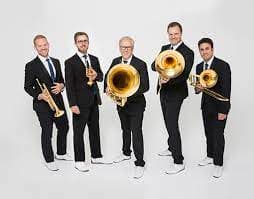
Bolette Roed © Caroline Bittencourt
We are so familiar with a work such as Vivaldi’s Spring Concerto from The Four Seasons. As a violin concerto, it provides the violin with the opportunity to show off the player’s virtuoso skills. We’ve heard it and, dare I say, overheard it to the point of not being able to hear it at all.
What happens, then, when the violin is replaced with something else? Listen to this recording of the first movement of the concerto with the violin replaced with a recorder. All of a sudden, we hear more birds, more different kinds of than we may have heard before.
Antonio Vivaldi: The Four Seasons – Violin Concerto in E Major, Op. 8, No. 1, RV 269, “La primavera” (Spring) (arr. for recorder and ensemble) – I. Allegro (Bolette Roed, recorder; Arte dei Suonatori)
In this arrangement of the concerto for organ and trumpet, the organ plays all the parts – both orchestra and soloist. It’s an interesting experiment because the organ contains so many sounds – bird-like high notes, solid supportive low notes. But, what we’re missing is that sense of the soloist – and the noise of the organ itself seems to trivialize the exercise.
Antonio Vivaldi: The Four Seasons – Violin Concerto in E Major, Op. 8, No. 1, RV 269, “La primavera” (Spring) (arr. M. Croese for organ) – I. Allegro (Michele Croese, organ)

Vienna Flautists
Removing the orchestra entirely, this arrangement for flute ensemble emphasizes the light qualities of the movement. The soloist emerges successfully even against the ensemble of similar instruments. We’re lacking the dark low sounds, but for this movement, it seems to work beautifully.
Antonio Vivaldi: The Four Seasons: Violin Concerto in E Major, Op. 8, No. 1, RV 269, “La primavera” (Spring) (arr. for flute ensemble): I. Allegro (Vienna Flautists)

The Canadian Brass
When arranged for brass quintet, the work regains some of its dignity, if only through the slower tempo. In the hands of the Canadian Brass, the trumpet can become the soloist, but the other instruments also add their own virtuosic touches, particularly when the time comes to imitate many different birds. The lower brass adds the bass sound that we’ve been missing.
Antonio Vivaldi: The Four Seasons – Violin Concerto in E Major, Op. 8, No. 1, RV 269, “La primavera” (Spring) – I. Allegro (arr. A. Frackenpohl for brass quintet) (The Canadian Brass)
These kinds of arrangements show how the different arrangements can bring a piece that we may have heard one too many times back into our ear. We hear different parts of the music brought forward and, often, usually missed inner parts can take on a new sound.
There are places, however, where this doesn’t work. In the slow second movement of the Spring concerto, the recorder just doesn’t have enough sustain to keep the long notes active. The longer bow on the violin helps there.
For more of the best in classical music, sign up to our E-Newsletter
Antonio Vivaldi: The Four Seasons – Violin Concerto in E Major, Op. 8, No. 1, RV 269, “La primavera” (Spring) (arr. for recorder and ensemble) – II. Largo (Bolette Roed, recorder; Arte dei Suonatori)

